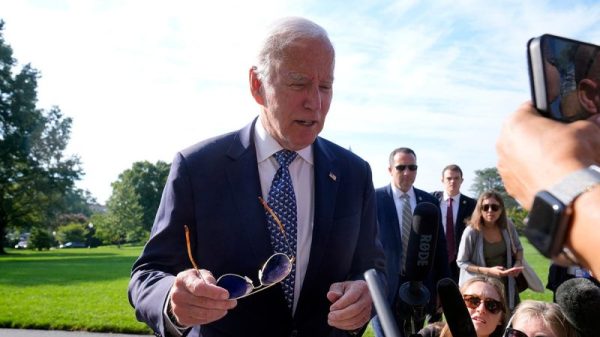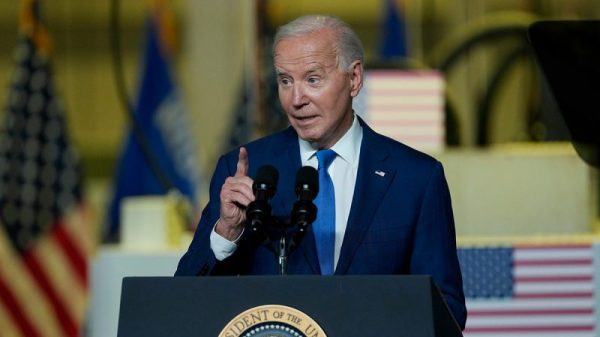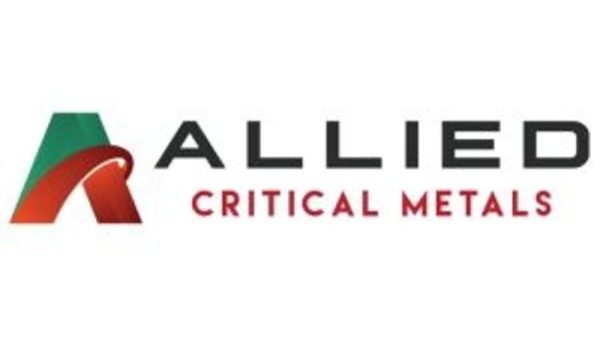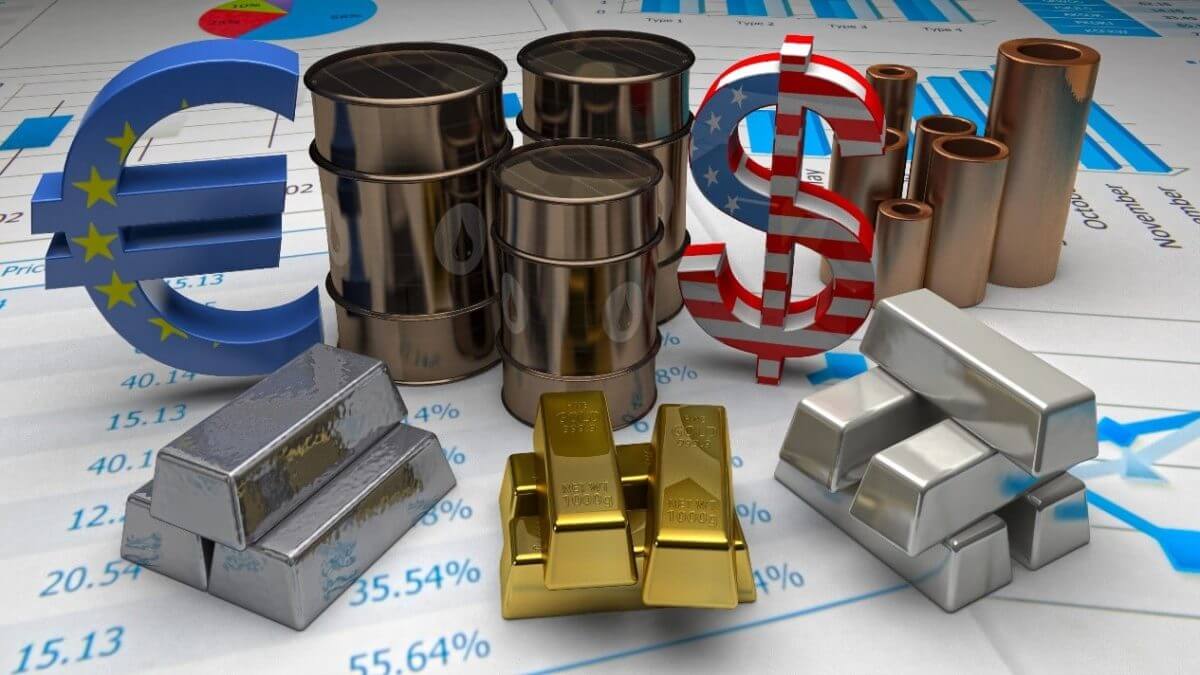How To Invest In Commodities
Commodities, the backbone of our global economy, comprise natural resources and agricultural products essential for producing food, energy, and clothing. Investing in these critical inputs can offer significant returns and diversify a portfolio. Here’s an in-depth look at the types of commodities, their performance, and how you can invest in them effectively.
Types Of Commodities
Commodities fall into two primary categories: soft and hard commodities.
Soft Commodities
Soft commodities are grown or reared and include agricultural products and livestock. Examples are:
Agricultural Commodities: Coffee, wheat, soybeans, cotton, corn.
Livestock and Meat: Cattle, pork, poultry.
Hard Commodities
Hard commodities are mined or extracted and consist of energy products and metals. Examples are:
Energy Products: Crude oil, natural gas, coal.
Precious and Industrial Metals: Gold, silver, palladium, copper, lithium, and aluminium.
Commodities Delivering The Highest Returns
Darius McDermott, managing director of Chelsea Financial Services, highlighted the robust performance of commodities in recent years. He noted, “Commodities had a very good run in 2021 and 2022 on the back of supply chain disruption and rising prices.” The S&P GSCI, a broad-based index of 24 commodities, returned 42% in both years. Although the index dipped in 2023, its low correlation with global equity markets underscores its value in a diversified portfolio. Here’s a closer look at the top-performing commodities:
Precious MetalsGold remains a preferred investment because it is a safe haven during uncertain times. High inflation, interest rates, and geopolitical tensions have driven demand, keeping gold prices near all-time highs.
Industrial MetalsIndustrial metals are highly cyclical, with prices falling during recessions as industrial demand decreases. However, metals like lithium, crucial for electric vehicle (EV) batteries, are expected to be long-term winners due to their role in green energy storage. Lithium prices hit a record high in late 2022 due to rising demand and supply constraints.Palladium, used in emission-reducing devices for cars, saw its price quadruple over a decade until March 2022. However, prices have since halved as supply constraints eased and manufacturers switched to cheaper platinum.
Energy ProductsEnergy commodities delivered substantial returns during and after the COVID-19 pandemic. The relaxation of lockdowns and geopolitical supply issues pushed oil and natural gas prices to near-record highs.
Investing in commodities can be done in several ways, each with its own set of benefits and considerations.
Buy Commodity ETFs and ETCs
Exchange-traded funds (ETFs) and exchange-traded commodities (ETCs) provide a low-cost way to invest in commodities. ETFs track a basket of investments or an index, while ETCs track commodity prices directly. As these are traded on the stock market, they offer liquidity similar to shares.
According to Trustnet, there are over 450 commodity-related exchange-traded products available, including:
Commodity ETFs: Hold physical commodities or build a portfolio of futures contracts.
Commodity Index ETFs: Track the price of a single commodity index or a broader index like precious metals, clean energy, or agricultural products.
Investing in ETFs is cost-effective, typically charging around 0.2% in annual fees compared to 0.8% to 1.0% for actively managed funds. For instance, a £1,000 investment in a fund charging 0.2% would cost £2, while a 1% charge would cost £10.
Dzmitry Lipski, head of funds research at Interactive Investor, suggests:
WisdomTree Enhanced Commodity ETF: Offers broad exposure to energy, industrial and precious metals, and agricultural products.
iShares Physical Gold ETF: Tracks the spot price of gold, known for performing well during economic turbulence.
Invest In Commodity-Based Funds And Investment Trusts
Commodity-based funds and investment trusts pool investor money to invest in companies involved in mining and production. Darius McDermott recommends:
BlackRock BGF World Mining Trust (BRWM): Invests in mining and metals companies.
TB Amati Strategic Metals: Focuses on metals vital to the global economy and future trends.
Barings Global Agriculture: Invests in the agricultural sector, including machinery and farming.
VT Gravis Clean Energy Income: Invests in renewable and sustainable energy across various regions.
Buy Shares In Commodity-Based Companies
Another approach is to buy shares in companies that produce, mine, or process commodities. These companies benefit from higher commodity prices, increasing profitability if production costs remain stable. However, share prices are also influenced by company-specific factors and broader geopolitical and environmental issues.
In the mining sector, Glencore (GLEN) is notable for producing over 60 commodities, including cobalt and nickel. Keith Bowman, investment analyst at Interactive Investor, states, “Exposure to commodities which assist decarbonisation and energy transition under climate change concerns continues to keep Glencore in the gaze of investors.”
Geopolitical Tensions And Economic Growth
The global geopolitical landscape plays a crucial role in commodity prices. Increased tensions in regions that are major producers of commodities can lead to supply disruptions, causing price spikes. Additionally, China’s economic growth significantly impacts commodity demand. As the world’s largest consumer of many commodities, any uptick in China’s growth can drive up prices due to increased demand.
The Green Energy Transition
Looking further ahead, commodities will be instrumental in transitioning to green energy to meet the ambitious net zero emissions targets set at the last COP 26 summit. Clean energy technology relies heavily on metals such as copper, lithium, nickel, and cobalt, essential for battery energy storage. Tilmann Galler, executive director at JP Morgan, predicted a surge in demand for these critical minerals over the next decade. He stated, “The clean technology transition is igniting a new supercycle in critical commodities, with natural resource companies emerging as winners.”
Agricultural Commodities And Global Population Growth
Agricultural commodities are poised to become increasingly important. Darius McDermott from Chelsea Financial Services suggested that agriculture could be “perhaps the greatest long-term story of all.” With a global population expected to reach nearly 10 billion by 2050, the challenge of feeding the world will necessitate significant long-term investment. McDermott pointed out, “Feeding the world is going to be a major task that will require substantial long-term investment.”
Should I Invest In Commodities?
Investing in commodities has traditionally been a strategy for institutional investors and high-net-worth individuals. However, the advent of commodity exchange-traded funds (ETFs) has made it possible for retail investors to gain relative ease of exposure to these alternative investments. While commodities can offer diversification benefits and potentially attractive returns, they also come with unique challenges and require a thorough understanding of the underlying assets.
The Rise Of Commodity ETFs
Commodity ETFs have democratized access to commodity investments. Now hundreds of different commodity ETFs are available, linked to various individual commodities (such as gold, oil, or corn) and commodities (including agricultural baskets and commodity indices). These financial instruments make it easier for investors to gain exposure to the often volatile world of commodities without the need to trade futures contracts or physically deliver the assets.
The Complexity Of Commodity ETFs
Despite their apparent simplicity, commodity ETFs can be complex. Some ETFs track the performance of a single commodity, while others follow a diversified basket or a specific commodity index. The structure and investment strategy of a commodity ETF can vary, with some funds investing directly in the physical commodity. In contrast, others use futures contracts, options, or swaps to gain exposure to the underlying assets.
This complexity can sometimes result in commodity ETFs not accurately reflecting the behaviour of the underlying commodity, making it difficult for investors to assess their performance and risk exposure accurately. Furthermore, using derivatives in some commodity ETFs introduces additional risks, such as counterparty and liquidity risks, which may not be immediately apparent to retail investors.
Diversification Benefits And Portfolio Allocation
One of the primary advantages of investing in commodities is the potential for diversification. Commodities often exhibit low correlations with traditional asset classes, such as stocks and bonds, meaning their price movements tend to be independent. This can help reduce a portfolio’s overall risk and potentially enhance long-term returns.
However, the diversification benefits should be weighed against the risks and complexities associated with these investments. Given the unique challenges of investing in commodities, retail investors must deeply understand the underlying assets and their behaviour. As a general guideline, investors might consider allocating a small portion of their portfolio (around 10-15%) to commodities. This allocation can enhance diversification without exposing the portfolio to excessive risk. The appropriate allocation, however, will depend on an individual’s risk tolerance, investment horizon, and financial goals.
Navigating Commodity Investments With Confidence
Investing in commodities presents an alluring opportunity for diversification, offering the potential for impressive returns. However, this alternative asset class’s complexities and inherent risks necessitate a cautious approach. For retail investors, seeking the guidance of a financial expert is crucial to making informed decisions and optimising investment strategies.
The Role Of A Financial Advisor
Given the intricate nature of commodity investments, a knowledgeable financial advisor is an invaluable resource. These professionals can help you evaluate your risk tolerance, investment objectives, and overall portfolio composition. This comprehensive assessment is essential in determining whether commodities are suitable for your investment strategy.
A financial advisor’s expertise extends beyond basic portfolio analysis. They can guide you through the multifaceted commodity Exchange-Traded Funds (ETFs) world. These investment vehicles offer a convenient way to gain exposure to commodities, but they come with their own set of complexities. Advisors can help you dissect the investment strategy, underlying assets, and risk factors of various commodity ETFs, ensuring that your choices align with your financial goals.
Navigating Commodity ETFs
Commodity ETFs have surged in popularity due to their ability to provide diversification and easy access to commodity markets. However, selecting the right ETFs requires a nuanced understanding of their structure and performance metrics. A financial advisor can help you navigate this landscape by analysing key factors such as:
Investment Strategy: Advisors can explain the strategies employed by different ETFs, whether they are focused on a specific commodity, a basket of commodities, or employ a futures-based approach.
Underlying Assets: Understanding what the ETF actually holds is crucial. Some ETFs directly invest in physical commodities, while others use derivatives or invest in commodity-related companies.
Risk Factors: Every ETF comes with its own set of risks, including market risk, liquidity risk, and tracking error. An advisor can help you understand these risks and their impact on your investment.
Performance And Fees: Evaluating past performance and fee structures is essential to ensure that the ETF offers value for money and aligns with your investment objectives.
Diversification Benefits And Risks
Investing in commodities can significantly enhance portfolio diversification. Commodities often exhibit low correlation with traditional asset classes such as stocks and bonds, which can help reduce overall portfolio volatility. In times of economic uncertainty or inflation, commodities like gold and oil tend to perform well, providing a hedge against market downturns.
However, these benefits come with challenges. Commodity prices can be highly volatile, influenced by many factors, including geopolitical events, weather conditions, and changes in supply and demand dynamics. This volatility necessitates a thorough understanding of the underlying assets and their behaviour.
Making Informed Decisions
Before committing a portion of your portfolio to commodities, weighing the potential benefits against the pitfalls is imperative. Consulting a financial expert ensures that you make informed decisions tailored to your unique circumstances. This involves a detailed analysis of:
Risk Tolerance: Understanding your capacity to endure market fluctuations is crucial. Commodities can be particularly volatile, and your advisor can help determine if this aligns with your risk profile.
Investment Horizon: Commodities might be more suitable for certain investment timelines. For instance, long-term investors might be better positioned to weather short-term volatility.
Financial Goals: Your overall financial objectives will influence how much, if any, of your portfolio should be allocated to commodities. An advisor can help balance your goals with realistic expectations of commodity performance.
Investing in commodities offers an array of opportunities for diversification and potentially high returns. Whether through ETFs, funds, or direct company shares, commodities can be crucial in a well-rounded investment portfolio. As with any investment, conducting thorough research and considering the associated risks before committing capital is essential.
The post How To Invest In Commodities appeared first on FinanceBrokerage.
































